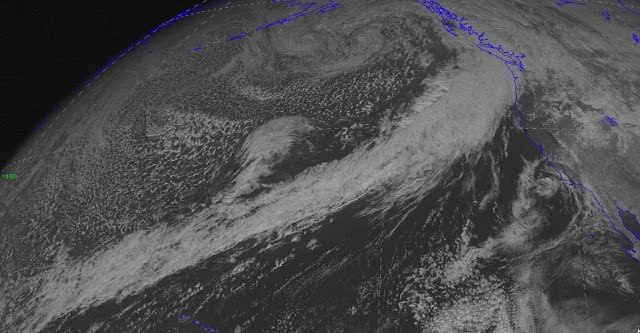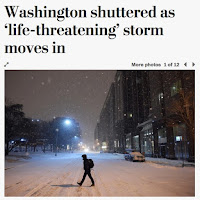Wasn't El Nino going to bring dry weather? Less snow in the mountains?
Complain after complaint.
But the truth is that the forecasts have actually been really quite good, with a lot of the misunderstanding coming from media folks that have not gotten the story quite right.
As they say in sports....let's go to the video tape.
Last summer, meteorologists were sure that a strong El Nino was going to occur this winter. And we knew what this typically for NW weather:
Before January first there is no real correlation with precipitation or temperature.
After January 1, the Northwest tends to be warmer than normal, with precipitation SLIGHTLY below normal, little snowfall near sea level, and modestly below normal snow in the mountains, resulting in the snowpack on April 1 ending up around 80% of normal. There is also a tendency after January 1 to have a trough over the northeast Pacific, with California ending up wetter than normal. We also forecast that El Nino would kill the BLOB.
Don't believe me? Check my blogs on
Sept 2, Dec. 28...and many others. Nick Bond, WA State Climatologist, was saying the same thing, as were many other local meteorologists.
Believe it or not....reality has followed these predictions quite closely.
The BLOB is dead, as shown by the latest sea surface temperature analysis, with modestly warm water immediately off the coast (typical of El Nino) and cooler than normal water offshore (blue colors). Good forecast.
At the end of December WA snowpack was huge...about 150% in places. Now, things have relaxed back to near normal in the Northwest, while California is above normal (see below). Snowpack percentiles have dropped substantially in the Cascades. The forecast is right on track.
Folks have been complaining about all the rain around here, lately, BUT IT ALWAYS RAINS A LOT IN JANUARY in our area. Here is the precipitation departure from normal for the last 30 days. Slightly drier than normal on the western slopes the Cascades, but considerable wetter than normal over northern CA. Good forecast.
Temperatures? Warmer than normal over western WA and Oregon. As predicted (although eastern Montana and North Dakota are cooler than normal, and usually El Nino brings warmth then). Not perfect overall, but good over the Northwest!
Snowfall over the lowlands? Much lower than normal...just a dusting one day here in Seattle. Excellent forecast.
What about the flow pattern over the eastern Pacific and western North America? Here is the anomaly (difference from normal) at 500 hPa (upper level around 18K feet) for the past month. CLASSIC EL NINO circulation, with a negative anomaly (low heights or pressure, purple color) over the eastern Pacific. Truly excellent prediction.
One could quibble about details, but PLEASE give meteorologists some credit...we got this one basically correct.
A hell of a lot better than political pundits and the Presidential election!
El Nino is not the end of the world in our area. And a typical El Nino year is way better than the crazy ridge pattern of last year, a pattern that we believe is the result of natural variability.
__________
Please support KPLU's fund drive to allow it to survive. The link. On Friday, they reached a major milestone: one million dollars. But they need to raise seven million to avoid destruction. A good segment on the race to save KPLU was broadcast on Friday, found here.






















































